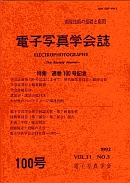Volume 32, Issue 4
Displaying 1-9 of 9 articles from this issue
- |<
- <
- 1
- >
- >|
-
1993Volume 32Issue 4 Pages 354-363
Published: 1993
Released on J-STAGE: May 31, 2007
Download PDF (3570K) -
1993Volume 32Issue 4 Pages 364-371
Published: 1993
Released on J-STAGE: May 31, 2007
Download PDF (2645K) -
1993Volume 32Issue 4 Pages 372-380
Published: 1993
Released on J-STAGE: May 31, 2007
Download PDF (1710K) -
1993Volume 32Issue 4 Pages 381-387
Published: 1993
Released on J-STAGE: May 31, 2007
Download PDF (2064K) -
1993Volume 32Issue 4 Pages 388-394
Published: 1993
Released on J-STAGE: May 31, 2007
Download PDF (3642K) -
1993Volume 32Issue 4 Pages 396-402
Published: 1993
Released on J-STAGE: May 31, 2007
Download PDF (4962K) -
1993Volume 32Issue 4 Pages 403-407
Published: 1993
Released on J-STAGE: May 31, 2007
Download PDF (2925K) -
1993Volume 32Issue 4 Pages 408-413
Published: 1993
Released on J-STAGE: May 31, 2007
Download PDF (3206K) -
1993Volume 32Issue 4 Pages 414-418
Published: 1993
Released on J-STAGE: May 31, 2007
Download PDF (1389K)
- |<
- <
- 1
- >
- >|
